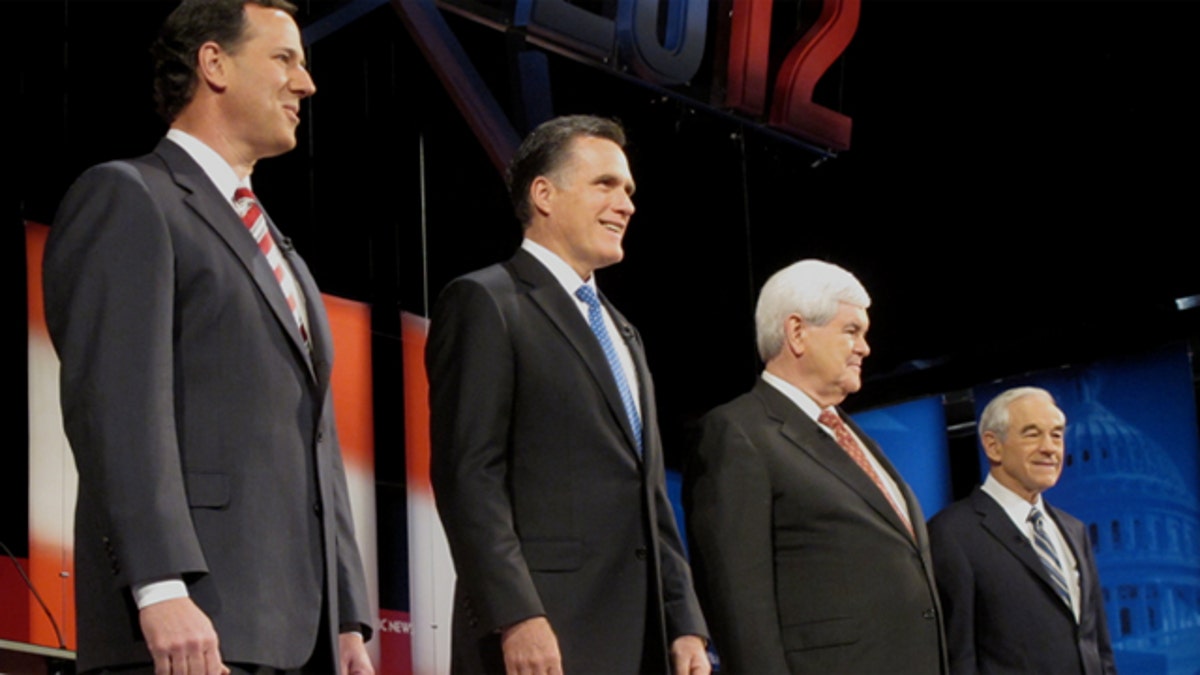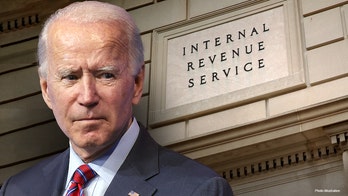
Jan. 23, 2012: Rick Santorum, Mitt Romney, Newt Gingrich and Ron Paul take the stage in Florida for the latest Republican presidential debate. (Fox News)
The Republican presidential primary so far has largely been a fight to get enough delegates to win the nomination at the party convention, which on Tuesday could put Maryland in the unfamiliar situation of having an impact.
"Probably the last time (Maryland) was relevant was 35, 40 years ago," said Allan Lichtman, American University history professor and author of "The Keys to the White House."
Lichtman was referring to the 1976 primary between Ronald Reagan and then-President Gerald Ford.
Maryland's primary on April 3 is exactly three months after the first primary caucus in Iowa. Usually candidates have been selected by the time the primary comes to Maryland, but not this year. Voters in Wisconsin and the District of Columbia also go to the polls that day.
The Republican primary has become a race to the magic number of 1,144 delegates that would give a candidate the nomination.
Former Massachusetts Gov.Mitt Romney has the lead with 558 delegates, former Sen.Rick Santorum has 273, former House Speaker Newt Gingrich has 133 and Ron Paul has 50.
"This is a contest for delegates and every delegate counts," Lichtman said. "And Maryland's 37 delegates count."
Maryland's delegates are allocated through a combination of a winner-take-all system and a proportion distribution. The primary is also closed so only registered Republicans can vote.
Each congressional district has three delegates who must vote for whomever wins their district, while the remaining 13 delegates are awarded to the candidate who wins the overall state vote.
The delegate system may benefit Santorum, who could do well in eastern Maryland's 1st District, but Romney will likely win the state and the extra delegates, Lichtman said.
Romney has a 17-point advantage over Santorum, according to a poll conducted by Rasmussen Reports on Wednesday. It showed Romney is supported by 45 percent of Maryland Republicans, Santorum with 28 percent, Gingrich with 12 percent and Paul with 7 percent.
"Maryland is a more moderate state," Lichtman said. "It's south of the Mason-Dixon Line, but it's got very different politics than Louisiana."
Registered Democrats outnumber Republicans more than two to one, and Maryland hasn't selected a Republican president since 1988. Democrats are the majority in the state House and Senate, hold six of the eight congressional districts and retain both U.S. Senate seats, as well as the governor's office.
Still this year, Republican candidates are visiting Maryland. Romney was in suburban Baltimore earlier this month. His Maryland campaign co-chairman, Louis M. Pope, said so many people attended that 250 people couldn't get into the venue, which holds about 350.
Newt Gingrich spent Tuesday visiting near the State House in Annapolis and speaking with students at Salisbury University. Rep. Andy Harris, R-Eastern Shore, is a co-chairman of Gingrich's Maryland campaign.
On Wednesday, Ron Paul held a town hall at the University of Maryland's College Park campus. One of the strongest cheers of the night came when Paul declared the fight for delegates wasn't over.
Santorum has not visited Maryland.
Last week's early voting brought more than 76,000 Marylanders to the polls. This year's election is not only a heated Republican presidential primary race, but a competitive race in several Congressional Districts.
"We're seeing some really competitive primaries in our open districts -- both the 4th and 6th," said Matthew Verghese, Maryland Democratic Party political and communications director.
Capital News Service contributed to this report.




